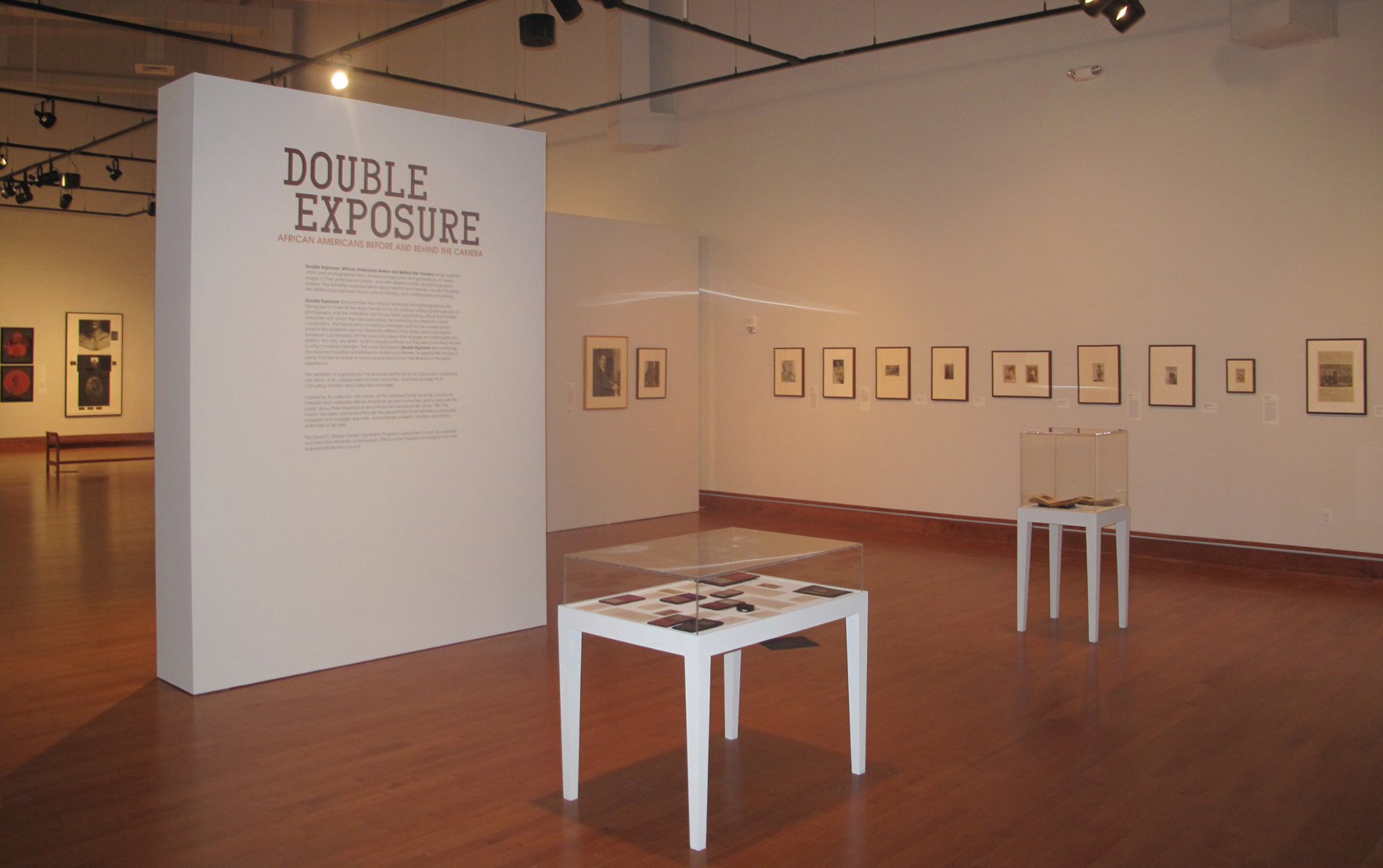Press Release: Double Exposure: African Americans Before And Behind The Camera
January 01, 2011

Exploration of african americans experiences through photography to be presented at the David C. Driskell Center
COLLEGE PARK, Md. --- Double Exposure: African Americans Before and Behind the Camera, showcases 90 vintage photographs from The Amistad Center for Art & Culture’s historical collection of art and artifacts with photo-based art by contemporary African American artists. The exhibition organized by the Amistad Center for Art & Culture at Wadsworth Atheneum Museum of art in Hartford, CT, opens to the public at the David C. Driskell Center for the Study of the Visual Arts and Culture of African Americans and the African Diaspora at the University of Maryland on Thursday, January 20, 2011, with an opening reception on Wednesday, January 19, 2011, from 5pm to 7pm. The exhibition will stay on view until Friday, March 11, 2011.
Double Exposure, curated by guest curators Lisa Henry and Frank Mitchell, illuminates the persistent interplay between the past and the present in African American photography. The exhibition highlights and explores the African American experience by bringing together photographic works from the 19th and 20th centuries by artists who expressed the experience of race through the use of personal, cultural and historical images. The exhibit delves into the interconnected reality of the past and the present for African American photography as well as concepts of identity and memory through visually theorizing the shifting relationships between black cultural memory and contemporary photographic storytelling.
Double Exposure presents the history of African American photography in thematic sections rather than a strict chronology. The major themes include: the influence of historical and family photography on contemporary African American art; the multiple uses of photographic appropriation, a technique that has been used since the 1970s to commemorate as well as to critique; the importance of the portrait tradition in African American photography from the earliest studio portraits of the 19th century to the mural size color and digital portraits made today; and the influence of master photographers such as Augustus Washington and James Van Der Zee. The techniques represented in the exhibit include: daguerreotypes, tintypes, cartes de visite, traditional silver prints, Polaroids, digital prints, assemblage, and photographs printed on linen, wood and felt.
The works of a variety of African American photographers are represented; in addition to those mentioned earlier, also included are J. P. Ball, Napoleon Sarony, Cornelius Marion Battey and Addison Scurlock as well as contemporary photographers such as Leslie Hewitt, Carla Williams, Clarissa Sligh, Lorna Simpson, Carrie Mae Weems, Albert Chong, and Myra Greene. Varying greatly in age and life experiences, as well as having different artistic, photographic and cultural interests, these artists display the daily lives of African American individuals and families in the Antebellum and Post Antebellum periods across the United States. This exhibition displays a range of works that cover significant events and periods throughout the history of the African American community such as the Reconstruction period to the Harlem Renaissance and beyond. This exhibition was sponsored by Aetna.
About the David C. Driskell Center
The David C. Driskell Center celebrates the legacy of David C. Driskell – Distinguished University Professor Emeritus of Art, Artist, Art Historian, Collector and Curator – by preserving the rich heritage of African American visual art and culture. The Driskell Center is committed to preserving, documenting and presenting African American art, as well as replenishing and expanding the field of African American art. This exhibition is supported in part, by a special fund from the Office of the President at the University of Maryland, College Park, and a grant from the Maryland State Arts Council.

